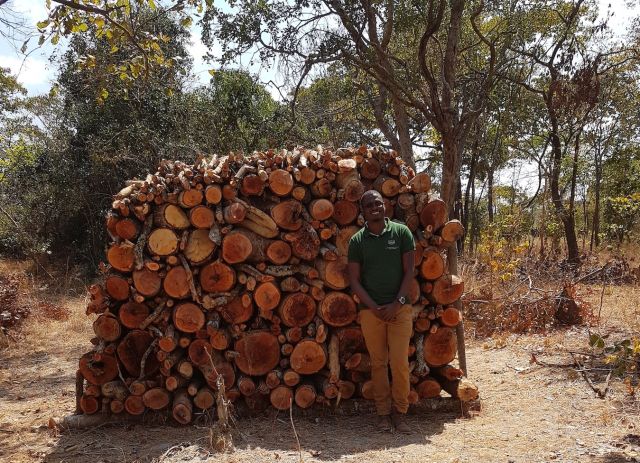
What we do
The Economic Development, Geography, & Environment (EDGE) Lab at UCSB is a multidisciplinary group of scholars and researchers focused on global issues such as climate change impacts, food insecurity, agricultural policy, migration and accessibility.
Guided by Dr. Kathy Baylis, the EDGE Lab brings together economists, physical and human geographers, GIScientists, industry professionals and stakeholders to untangle complex challenges and create effective methodologies for prediction, detection, and risk mitigation. Through innovative research we seek to drive positive change that improves the livelihoods of people around the world.
Collaboration
We collaborate with a variety of groups including the UCSB emLAB, the Climate Hazards Center, and the WAVES Lab. We also use a plethora of international data sources.
Research Collaborations
Predicting the effect of climate extremes on the food system to improve resilience of global and local food security
The number of food insecure people around the world is staggering: 2.4 billion people in 2020, an increase of 320 million since 2019 (UN, 2022). This year, a deadly combination of climate shocks, conflict, and the pandemic have pushed 50 million people to the edge of famine (WFP, 2022), highlighting the vulnerability of our global food system. Shocks to the food system are not isolated, and can cascade. The aim of our research is twofold. First, we are creating predictive models that account for interlinkages across food security drivers. Second, to produce an actionable output, these models need to be co-developed with stakeholders from the outset. Project summary is courtesy of the UCSB emLab.
Understanding variable responses to economic incentives for land-based climate solutions
As the world seeks to confront climate change, conserve biodiversity and end hunger, policymakers will need to influence the way individuals use and manage the earth’s land. A common policy proposal is to create financial incentives that encourage private landowners to address climate impacts in their land-use decision making, for example, by paying landowners to plant trees on their property. This project consists of four workstreams: (1) Estimating global and regional price elasticities for land use change; (2) Explore variability in elasticities; (3) Developing high-resolution, national-level models of land use change; and (4) Quantify the impact of inelastic responses to incentives on the adoption of climate-friendly land use practices. Project summary is courtesy of the UCSB emLab.
Comparing the impacts of natural climate solution interventions
Natural climate solutions (NCS) are conservation, restoration and improved land management interventions that increase carbon storage or avoid greenhouse gas emissions in landscapes and wetlands across the globe. NCS interventions have been implemented all around the world using a diverse variety of approaches. To sustain and expand NCS investments we are partnering with Conservation International to advance understanding of the relative effectiveness of different NCS interventions implemented in a variety of contexts. This project will examine and evaluate natural climate solutions (NCS) interventions in different regions. We will first develop a conceptual framework to rigorously compare the effectiveness of different natural climate solutions. This framework will rely on state-of-the-art statistical methods applied to remote sensing and rich spatial datasets, and would be applicable to different scales, from regional to global. It will help inform which policies work when, as well as identify ways to better target and combine policies across a diverse landscape. We will test this framework in two case studies. Project summary is courtesy of the UCSB emLab.
Student Led Research Projects
Valuing Forests Through Crop Yields
The project aims to understand the impact of forests to nearby crop yields in the US. We employ several remote sensed datasets to measure this effect and understand the importance of different mechanisms driving it. The final goal is to obtain a measure of the value of forests through their contribution to crop yields.
Religious Institutions and Externalities
This research provides causal evidence on the effect of laws developed by non-state
religious institutions on the reduction of environmental externalities. Using both field and natural experiments to study the impact of laws made by religious institutions in Pakistan and Indonesia. This work develops a theory supported by empirical evidence to show how religious institutions can be complementary to state institutions for the governance of natural resources. This research aims to provide policy makers with a mechanism to develop a collaborative system of environmental regulation by involving religious institutions.
Does humidity matter? Prenatal heat and child growth in South Asia
Extreme heat under climate change has already begun to threaten health, particularly for mothers and babies in the hottest parts of the world. When exposure occurs in utero, extreme heat can undermine child growth and development, leading to devastating later-life consequences for both health and socio-economic stability. However, different types of prenatal heat may pose different risks for child health. We assess the specific impact of hot-humid extremes on child height attainment in three South Asian countries using fine-scale climate records, trimester-level exposure identification, comprehensive data on child growth and demographics, and a rigorous fixed effects design. Our results provide new insight into which heat events are most dangerous for early life health and when, in a region where near-annual heat waves already affect millions and are projected to worsen under further climate change.
Research Locations
Check out some of our previous research collaborations here.
